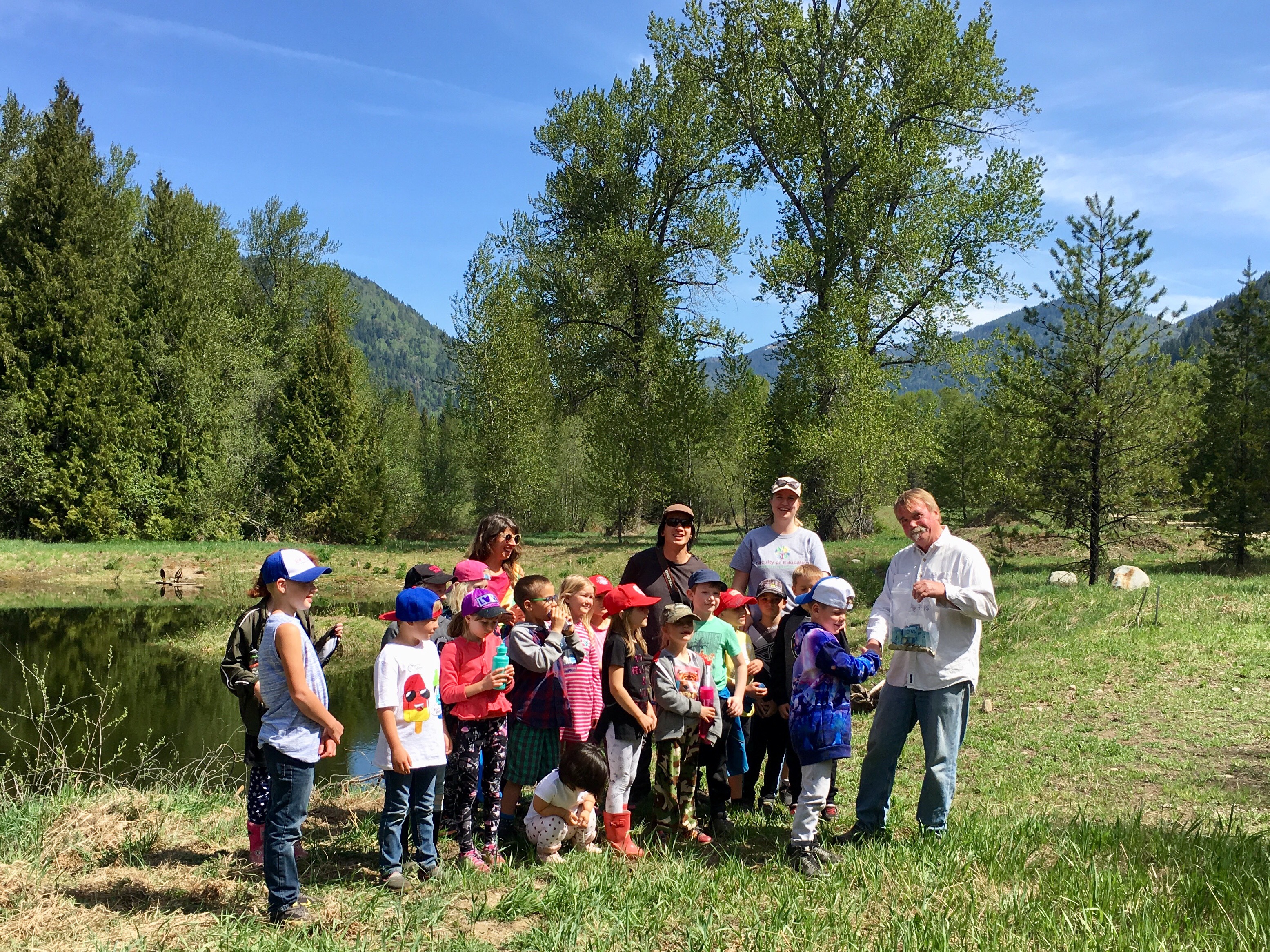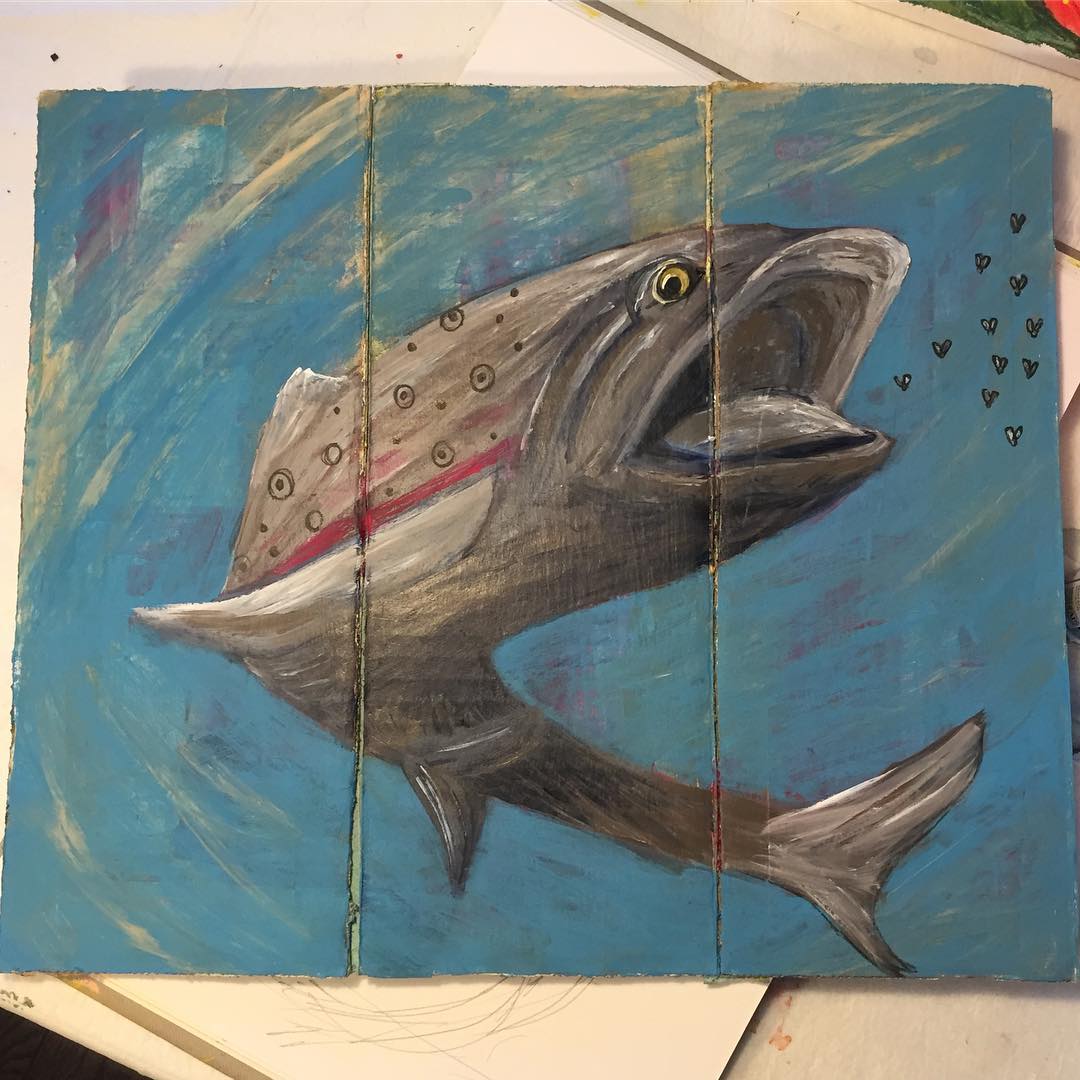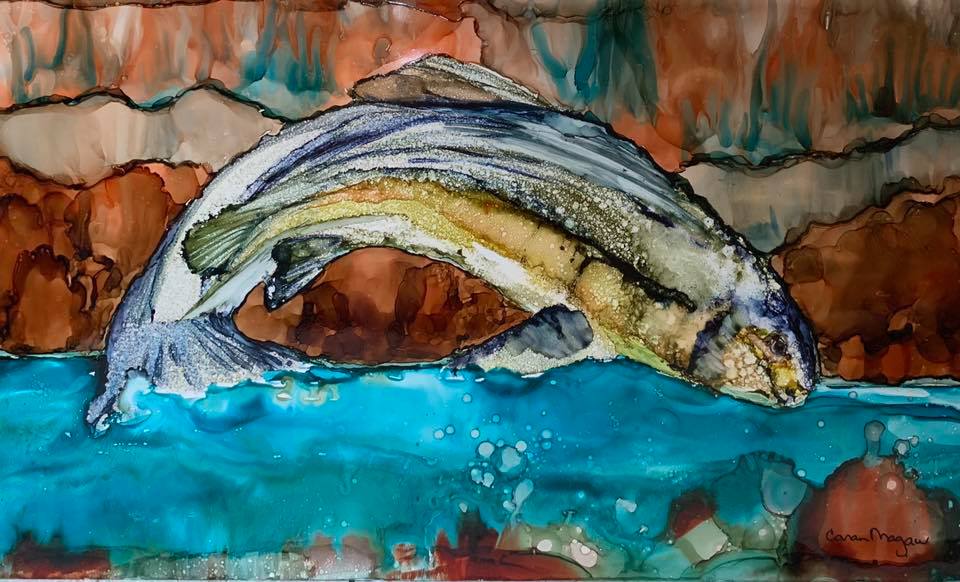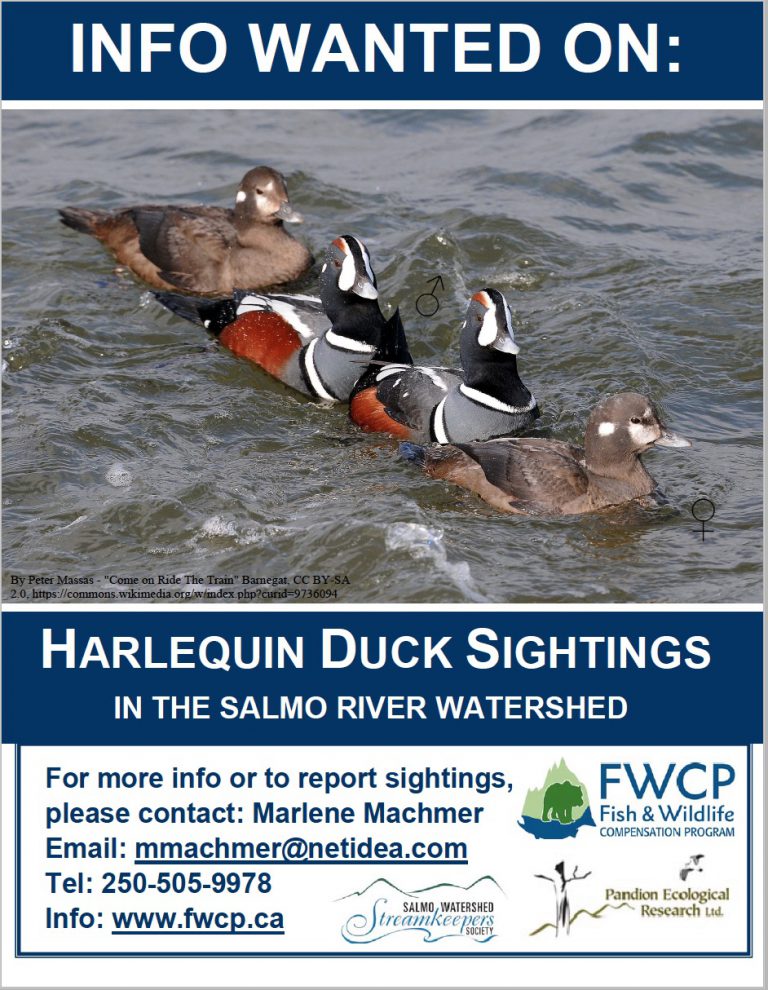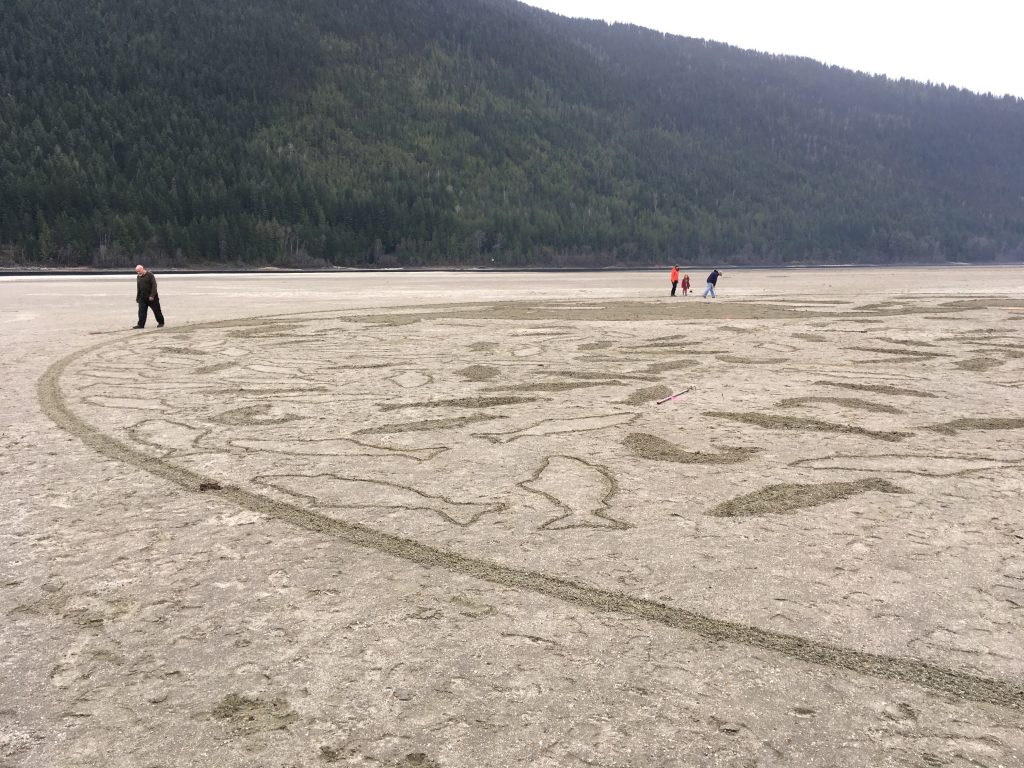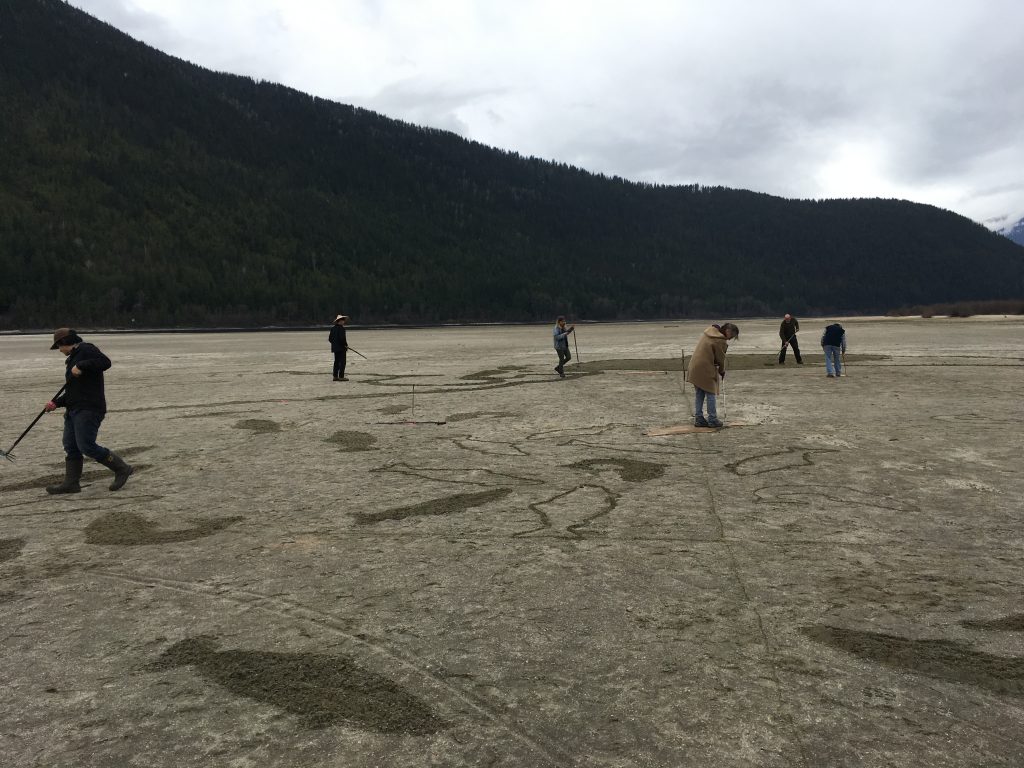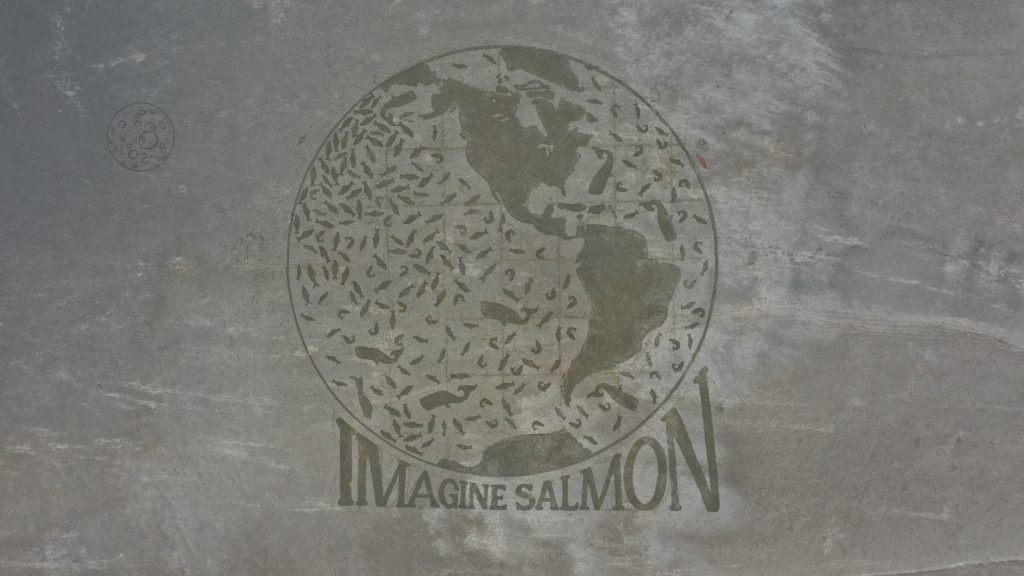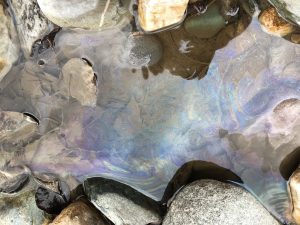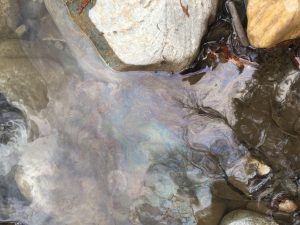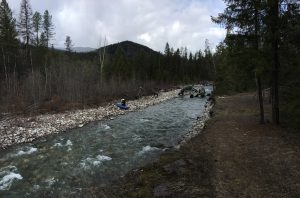Earlier this week, we had the opportunity to welcome grade 2 and 3 students from the Salmo elementary school. This was an initiative by Emily Newberry, a local resident and student of the teaching program at the University of Victoria. As part of her 6 weeks practicum, Emily and her student built a community project. Together, they choose to act on the loss of wetland habitat in the Salmo River Watershed. In April, they organized a bake sale at the Salmo Village Grocery and raised 177.15$. The money was used for the purchase of willow cuttings which they planted around SWSS’s wetlands. The students also attended a presentation on the importance of wetlands. This was a very fun experience and will greatly contribute to our wetland restoration effort. We would like to thank everyone who have supported this activity. Many volunteer parents were also present and were very helpful in making this a success. On the picture bellow, a student is handing the money to SWSS’s coordinator, Gerry Nellestijn.
Author Archives: Chris Harkness
Art Fundraiser!
This year, the Ymir House Art Show have chosen to support the Salmo Watershed Streamkeepers Society with their annual fundraiser. Local artists Paula Ebelher and Caran J Magaw have produced some wonderful pieces inspired by the beauty of our Watershed. Check them out on Facebook at: Ymir House Art Show III.
‘Hatch’ by Paula Ebelher
‘Return’ by Caran J Magaw. A 20×12” ink on diabond. It symbolizes the hope for Salmon to return to the Salmo river. Also available in 6×4″ postcards.
Sightings of Harlequin Ducks Wanted in the Salmo River Watershed:
Harlequin Ducks are striking sea ducks that overwinter on the coast and migrate to the interior to breed. Their ability to swim in turbulent white water, where they dip and dive for aquatic insects, is unmatched. For breeding, they select undisturbed, fast-moving portions of rivers and streams with dense riparian vegetation. Females return to their natal streams, and typically use the same breeding sites, unless they become degraded or disturbed. For all of the above reasons, Harlequin Ducks are sensitive indicators of freshwater ecosystems.
A 1996 inventory of Harlequins conducted in the Salmo River watershed documented a provincially significant breeding population (54 adults: 33 males and 21 females). Since then, there’s been a number of changes in the watershed, and an FWCP survey in 1999 began to document population declines. A 2009 re-survey confirmed a 22% decline in the adult population. Additional stressors have emerged, most notably a March 2019 fuel spill in the South Salmo River which further threatens this population. Pandion Ecological Research Ltd., in collaboration with Salmo Watershed Streamkeepers Society, is repeating a Harlequin pair and brood inventory from May to July 2019, along with stewardship follow-up at specific sites.
You can help!
Information and sightings are actively being sought from the public to assist in focusing inventory and stewardship attention on active sites, and in detecting oiled birds. Please share your sightings of Harlequin Ducks in the Salmo River watershed.
Thanks in advance for your help!
Contact:
Marlene Machmer
Email: mmachmer@netidea.com
Tel: 250-505-9978
More info: www.fwcp.ca
This inventory and stewardship of
Salmo Watershed Harlequin Ducks is
funded by the Fish & Wildlife
Compensation Program
(www.fwcp.ca).
Imagine Salmon Sand Scratch
This public art is part of the SWSS’s Multi-facted Imagine Salmon Campaign supporting Salmon Reintroduction into the Salmo(N) River and beyond into the Columbia River upstream of Chief Joseph Dam. The Chief Joseph and the Grand Coolie dams are passage barriers for Salmon migration into their historical spawning waters in the Canadian Columbia Basin.
A big thanks to Donavan Ackerman for the drone imagery!
- default
South Salmo River Fuel Spill
On April 11th 2018, we went downstream of the South Salmo River confluence to have a look at the Environmental response activities following the fuel spill in the South Salmo River. A spider hoe, a low Environmental impact exactor, was on site to agitate the substrate in order to release the fuel trapped in the substrate. Booms were still on site to contain and skim the fuel. We also went on the field the week before. The smell was still apparent and walking on the stream edge released fuel sheening. We flipped a few rocks and only dead invertebrates were observed. On April 14th, we were informed that the environmental emergency response team was leaving the site. The Salmo Watershed Streamkeepers Society was not involved in the environmental emergency.
More info are available here:
https://www2.gov.bc.ca/gov/content/environment/air-land-water/spills-environmental-emergencies/spill-incidents/motor-vehicle-incident-south-of-salmo
Open Letter in Response of the South Salmo River Fuel Spill
Fri March 29th
Open Letter Re: The South Salmo River Petroleum spill.
It’s been approximately 32 hours since an extreme human and Environmental tragedy has occurred involving the driver of a double tanker truck, Highway 3 – the “Kootenay Pass” the South Salmo/Salmo River and downstream water bodies.
This is an emotional story, one that first of all needs to acknowledge our sincere sympathy for the family, friends and colleagues of the truck driver that lost his life in an accident that ended up placing the double tanker truck in the South Salmo River.
It’s also an extreme Environmental disaster. Although we have not been made aware of any clear figures detailing the extent of the spill, it is clear that this is serious. Perhaps the most serious spill of its kind in the West Kootenay…beyond? In the Salmo River Watershed it is likely the single most direct dumping – in this case accidental – of aggressive pollutants into our system since eleven operating Stamp Mills used the Salmo River, with impunity, to rid themselves of their toxins.
The Environmental consequence of the spill will likely have ongoing impacts for years, how many years will be a consequence of how we – humans – treat this disaster. Will we try to let it go, fade away, do nothing? Certainly this is a typical strategy of other Environmental disasters that are unfolding here and beyond. The Forest Sector disaster, mine tailings restoration, the emerging pipelines disaster, air, soil and water quality disasters that are all happening, again with impunity.
After over two decades of study in the Salmo River Watershed, Streamkeepers knows that we need restoration in this River system. We have chosen to use two simple strategies for our Aquatic Ecosystem Community. Common strategies to all life. Provide a home… and food.
The spill will likely have disastrous effects on every variable contributing to food production in the system – the ability of nutrients to respond naturally – to feed periphyton or mosses that feed invertebrates (aquatic bugs) that are the prey species for the Rainbow Trout and Bull Trout that are rearing and overwintering downstream of the spill.
Clearly extensive ‘home renovations’ will have to occur to mitigate the impacts of this disaster as well.
Streamkeepers realize that the Environment is quickly becoming recognized as the central over-arching social justice issue on the Planet.
We also recognize that those that benefit from the Environment should support a stable approach to restore it. This also applies to those that impact the Environment.
Traditionally sectoral interests of the economy, Community and the Environment have been separated. Thinking today realizes that sectoral separation is a major disadvantage, we all need to work together to make the Place Where We Live better.
Streamkeepers has lead, or been part of studies in the South Salmo River and Downstream for decades. In this tragedy, our insights, expertise have not been consulted or responded to. Re: this spill and the other emerging environmental disasters in this Watershed and beyond it’s time for the exclusion tactic– whatever the reason – of those involved in response to these events – to end.

